Preserving a clear view through clear plastic on dodgers or enclosures is one of the most challenging tasks in boat maintenance. Restoring a vinyl window is almost impossible, but that doesn’t stop the tide of products that claim to make this job easy. Practical Sailor’s Eisenglass cleaners test looks at 27 products touted primarily as cleaners or treatments for vinyl windows. The test products were divided into four types: cleaners, scratch repairers, polish protectants, and UV protectants.
After a week of testing, we found Imar Strataglass Protective Cleaner and Imar Strataglass Protective Polish, distributed by Defender Industries, to be the Best Choice. Collinite No. 845 Insulator Wax and Mer-Maids Plexiglass Plastic Cleaner and Polish were the Budget Buys. The test also included products from the following manufacturers: 303, 3M, Aquatech, Armada, Davies, Marykate, Meguiars. Mothers, Novus, Plexus, Sailors’ Solutions, Star brite, Turtle Wax, West Marine, and Yacht Brite.
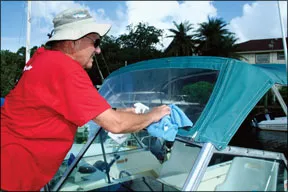
Although many of the products in this article can be used on hard acrylic or polycarbonate hatch glazing, this article examines their performance only on the soft, flexible clear-vinyl windows, such as those that you’ll find in a dodger or cockpit enclosure.
Canvas shops use a variety of clear vinyl (PVC) products to make these windows. Ultraclear, Crystal Clear, Seaflex, Achilles, and Strataglass are some common brand names. Practical Sailor will be comparing these and other types of clear plastics (such as Stamoid) in a future article.
All of these materials are susceptible to scratching, smudging, and wear. Over time, they become brittle as they lose the chemicals that keep them soft and pliable. In addition, ultraviolet rays can quickly damage the vinyl, causing hazing, cracking, and yellowing. The products reviewed here help delay that process.
WHAT WE TESTED
Practical Sailor evaluated 27 products (three were two-step applications) from 18 manufacturers that were advertised, labeled, or recommended primarily as cleaners or treatments for clear-vinyl windows. All are available through marine dealers, chandlers, or online.
For comparison, we broke them down into the following categories: cleaners; scratch repairers; polish/protectants; UV protectants. Eight claimed to have UV protection, 10 included a formula or fine abrasives to remove light scratches and smudges. and all but two products promised a polished finish. Products that stood out (for good or for bad) in the field are discussed below.
Armada
Armada’s 210 Plastic Cleaner/Polish, a 14-ounce aerosol, excelled in cleaning and polishing our test vinyl. It provides a clear, lustrous finish with a protective coating that is anti-static and anti-fog. For older or scratched windows, use the Armada 210 Plus, which includes a very mild abrasive compound that does a reasonably good job of removing dirty residues, smudges, and fine scratches.
Bottom line: The 210 Plus is an excellent cleaner with anti-fog and anti-static properties. The 210 polishes well, but aerosol cans don’t keep well aboard boats normally operated in salt water.
3M
Step-one in a two-step process, 3Ms Marine Vinyl Cleaner and Restorer removes haze, dirt, and stains with a thick creamy liquid. It is an above-average cleaner. The second step involves applying the 3M Marine Plastic Polish, a thick white cream that cleans and when buffed, yields a protective, high-gloss finish. The formula includes restorative mineral oils, glycerin, and carnauba wax.
Bottom line: The 3M cleaner worked fine, but the polish produced only Fair results.
303 Aerospace Protectant
Often recommended to preserve inflatable dinghies, 303’s Aerospace Protectant spray cleans, shines, and leaves a UV protection of SPF 40. Directions call for renewing the finish monthly.
Bottom line: The 303 spray has multiple uses, offers good protection, and is moderately priced.
Aquatech
The Aquatech Clear Enclosure Cleaner and Protectant (No. 750) sprays a light, clear liquid that is designed to clean, without any alcohol, ammonia, or harsh chemicals. The Premier Polish and UV Protectant (No. 201) is a general-purpose polish for gelcoat, paint, and metal. It is a thick, white cream that slowly dries to a haze.

Bottom line: The 750 cleaner and protectant cleans quickly and leaves a slight shine. The 201 adds an excellent polished sheen with UV protection.
Collinite
The Collinite 845 Insulator Wax is a thick cream designed for marine and industrial applications where a heavy-duty, high-gloss UV protective coating is required. It keeps dirt, dust, and salt from sticking and assures full protection against sun, rain, bugs, and salt spray.
Bottom line: Collinite polishes well and has multiple uses and a good track record at an affordable price. It’s our Budget Buy.
Imar
Imar’s Strataglass Protective Cleaner (No. 301) and Strataglass Protective Polish (No. 302) are the only products recommended by Strataglass. The Imar 301 produces a fine, clear mist from a 16-ounce spray bottle. Imar recommends using the product regularly when you wash and rinse the boat. The 302 provides the same UV protection as 301, but the creamy liquid adds a thicker protective coating and brighter shine. Imar recommends reapplying 302 about every three to four months.
Bottom line: Imar’s 301 ranked high as a very good cleaner. The 302 was one of the better polishers that we tested, beading up best in the water test.
MaryKate
MaryKate’s Glassplex Glass Cleaner (No. 3918) multipurpose glass, acrylic, and vinyl cleaner-a fine, clear liquid delivered through a trigger-spray nozzle-does an acceptable job of cleaning oil and dirt. MaryKate also makes Clear Vinyl Cleaner and Polish (No. 6414), which we did not test. Neither contains alcohol or ammonia.
Bottom line: Though not a standout, the MaryKate 3918 was the most economical of the cleaning products tested.
Mer-Maids
A Best Buy in a 2003 test, Mer-Maids Plexiglass/Plastic Cleaner and Polish is a clear spray that goes on fast and is easy to wipe off. It is reasonably priced, and does a fairly good job cleaning and shining.
Bottom line: Mer-Maids product cleaned well, provides anti-static and anti-fog protection, and does not contain alcohol or ammonia. A good bet for routine cleaning.
Meguiars
Testers looked at three products from Meguiars. The Clear Plastic Detailer (No. 18) is a handy one-step cleaner and polish in an 8-ounce spray bottle. It sprays a clear liquid that you wipe and polish immediately. If allowed to dry, it can leave streaks.The Clear Plastic Cleaner (No. 17) helps remove ground-in dirt and small scratches with a non-abrasive cleaning formula. The Clear Plastic Polish (No. 10) is a thick, creamy liquid that can follow the No. 17 cleaner, and provides a static-free coating that repels dust and shines up nicely.
Bottom line: Of the three Meguiars products, the No. 10 polish stood out best in its category.
Mothers
Mothers Marine Power Plastic is a one-step cleaner, restorer, polish, and UV protectant. It is a creamy liquid in a bright red, 8-ounce plastic bottle that claims to remove light scratches, oxidation, stains, and yellowing. Once dried to a haze, it buffs out to a nice bright finish.
Bottom line: A good do-it-all product for reviving and protecting old windows. When polishing soft, clear vinyl, PS doesn’t recommend using it with a drill-mounted polisher, as Mothers suggests.
Novus
The Novus No. 1 Clean and Shine Plastic Polish did an excellent job of leaving a lustrous shine that resists fogging and static, and provides a good protective coating.Despite its name, the Novus No. 2 Fine Scratch Remover is meant as the first step in cleaning, and it does a good job of it. (There is also a more abrasive No. 3.)
Bottom line: These Novus products offer an excellent two-step program, particularly for scratched windows.
Plexus
Originally developed for airplane windshields, Plexus Plastic Cleaner and Polish is well known for cleaning and polishing a multitude of plastic surfaces. The can sprays out a fine mist of clear liquid that cleans as it polishes and leaves a shiny anti-static protective residue.
Bottom line: This is a good product for well-maintained vinyl, but the metal can will rust.
Sailors Solutions
Sailors Solutions X-16 Plastic Window Polish is a combination cleaner (with extra-fine abrasive), polish, and UV protectant that works well but can separate over time. Follow directions and don’t let it dry too much, or it will be difficult to remove and will leave streaks.
Bottom line: The packaging is cheap (the label and directions smeared after a few uses), but the creamy liquid formula quickly removed some light scratches and left a nice shine.
Star Brite
Star brite has a two-step process for restoring and reviving clear plastic. Star brite Step 1 Plastic Scratch Remover is an ultra-fine abrasive for cleaning and restoring older plastic windows. The Step 2 Plastic Polish/Restorer is a light, clear liquid in an 8-ounce bottle that leaves a thin, polished coating.
Bottom line: This is an inexpensive and effective one-two punch for older vinyl.
West Marine
Packaged in an easy-to-stow 8-ounce spray bottle, West Marine’s One-step Plastic Cleaner Polish is a light, cream-colored liquid. It does a nice job of both cleaning and removing fine scratches, and it leaves a protective coating.
Bottom line: This cleaner-polish is held back by its higher price.
Yacht Brite
Yacht Brite Serious Shine, a 3-in-1 cleaner, polish and protectant in a 14-ounce aerosol, buffs to a nice shine and leaves a fine film that repels water with UV inhibitors and anti-static properties. It contains alcohol and solvents that are not recommended for some plastics.
Bottom line: This spray is easy to use and performs well, but the rust-prone aerosol can belongs ashore.
CONCLUSIONS
Don’t put too much stock in claims that hazing, yellowing, or scratches will be eliminated. We found no miracle cure.
Products that included fine abrasives to remove light scratches took several applications and a considerable amount of hand rubbing to slowly eliminate scratches. Since abrasives can do more harm than good, we recommend them only as a last resort. Dont use electric buffers and always test on an inconspicuous area.
When testers had done a good job of cleaning the vinyl with any of the cleaners, a second step of applying and buffing with a good polish obviously improved clarity. Applying a second coat of polish the next day produced a thicker, longer-lasting protective coating that shined and beaded better.
Many products were very effective at improving visibility and preventing staining and dirt buildup. Some were easier to use than others. The clear liquids have a tendency to run, so they should be applied to a cloth first. Creams show where you have been. Sprays are handiest and probably best for a quick retouch. Here’s what we found:
Of the products that claimed to only clean, the Imar 301 was the clear winner, and it also is safe for treated vinyl.
For owners of older dodgers with small scratches, the Novus No. 2 Fine Scratch Remover proved to be the most effective, followed closely by the Armada 210 Plus Plastic Cleaner/Polish and Mother’s Marine Power Plastic.
Among the polishes, the Imar 302 Protective Polish, Novus No. 1, Collinite No. 845, Mother’s Marine Power, and Aquatech’s Premier Polish produced the best shine and beading, rating Excellent.
The best one-bottle cleaner, scratch remover, and polish with UV protection was Mother’s Marine Power Plastic. Sailors’ Solutions X-16 also does it all and was rated Good-to-Excellent.
If you prefer a two-step process, then the Imar #301/#302 combo is the way to go. They produced the cleanest and shiniest windows and beaded water the best, earning the Best Choice honors. The Novus and Star Brite two-part products were close behind.
This article was first published February 19, 2009 and has been updated.


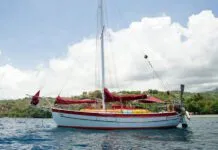

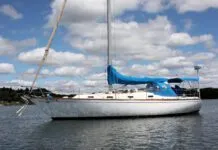

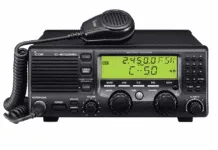



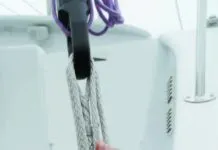
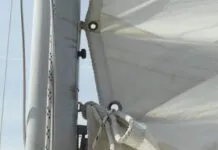

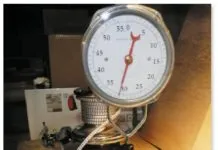
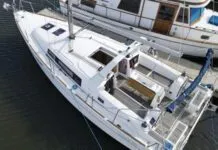
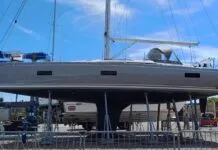
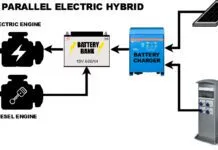




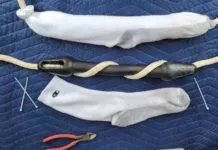



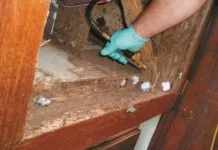

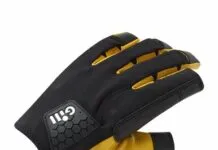






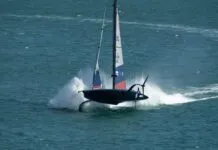
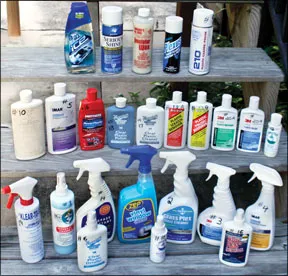
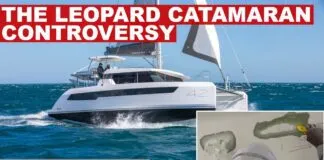




Are you now not providing the same charts as you had been for years? Has this great part of practical sailor gone the way of the do-do bird like the print edition.